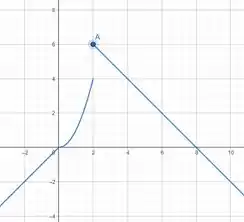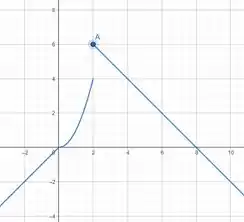Seja
- Calcule, se existirem, os limites.
- Esboce o gráfico de .
Passo 1
Opa, bora lá! Temos a função:
E temos que calcular alguns limites! Para isso devemos observar o intervalo e lembrar que o sinal de em cima do número indica pela direita e o sinal de pela esquerda do valor em análise. Assim:
Passo 2
Plotando nosso gráfico, ficaremos com:

Prontinho!
Resposta
